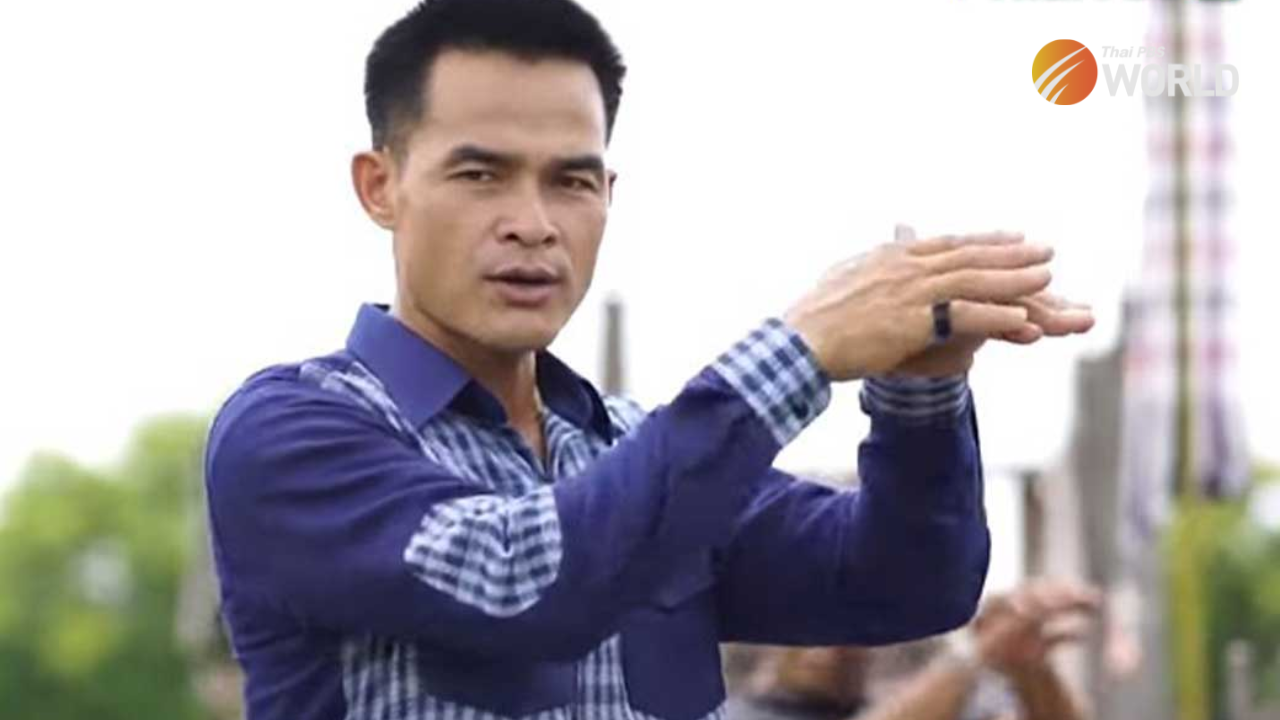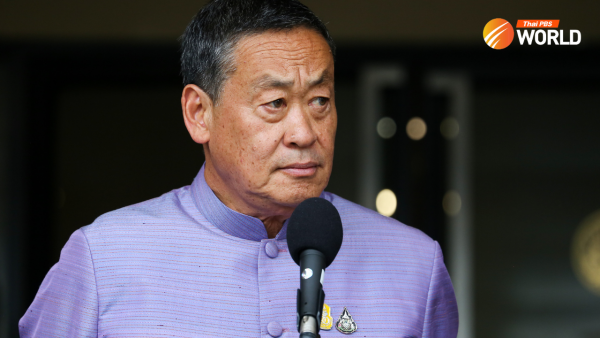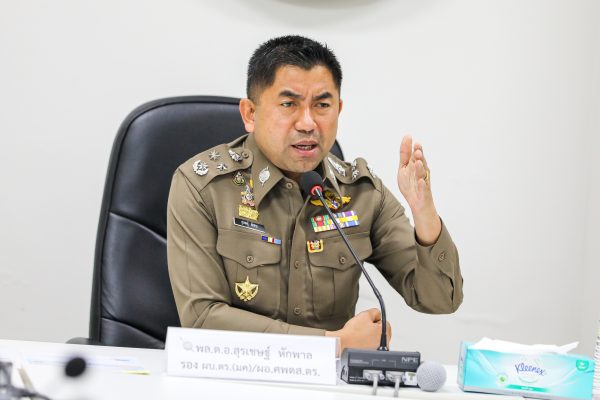Countdown begins for historic Nong Chompoo ruling

On October 31, a Criminal Court verdict will come down on a case that once captivated Thailand. If “Loong Phol” is set free, it can bring a trail-blazing defense strategy into sharp focus. But on the other hand, if his unprecedented use of social media fails to prevent a murder conviction, the celebrated defendant will have lost to old-style justice system and much of the country will drop its jaw.
The case has everything. A mother who lost her child and then, initially, could not leave her home because much of the world thought she did it herself. The girl’s uncle-in-law who became a police suspect and thanks to the media was engulfed in a groundswell of public sympathy. The man’s eventual fallout with the mainstream media because of negative reporting. Stories of extreme jealousy, of an unbelievable from-rags-to-riches journey, of superstitious beliefs of the locals and of alleged scams involving fraud and money laundering.
Chaiyaphol Wipa has been on trial for the death of three-year-old child Orawan Wongsricha, or “Nong Chompoo”, who was his wife’s niece. The girl disappeared on May 11, 2020. Three days later, her body was found naked, up on a hill several kilometres from her house. Chaiyaphol, aka Loong Phol, became a suspect but the mainstream media portrayed him as a poor and naïve man and he attracted unheard-of sympathy and popularity.
He and his wife, Somporn, aka Pa Taen, were finally implicated. But from a family that used blankets as parts of house and toilet walls, he and his wife managed to buy a brand-new van. His fan club that existed throughout Thailand and much overseas sent trucks loaded with furniture and basic necessities to the couple’s home, which was to be renovated beyond recognition. Video clips of him eating rice and plain omelet had millions of views on YouTube.
The family’s house became a tourist spot, drawing big crowds of visitors virtually every day. A market materialised around the home selling refreshments, food, fruits and other local products to tourists. When the couple stopped their new-found careers as honorary fashion models and invited singers on concert stages, jobs that gave them handsome incomes, they brought a big log to their home and shortly afterwards it became a miracle log worshipped by visitors. More donations poured in, this time not just for the couple, but also for religious and superstitious activities around the house.
After the log was seized by the forestry authorities, he built a giant naga statue near his house. The construction led to even more donations _ and gossips by detractors. Crowded ceremonies took place often, joined by high-ranking local officials, senior monks and famous national celebrities.
Most of these were taking place just a stone’s throw away from Nong Chompoo’s house, where her mother had to lock herself up because of the hate. Due in no small part to his interviews, the little girl’s parents were viewed with suspicion and the two families were torn apart even before Chaiyaphol and Somporn became court defendants.
One of the most amazing scenes in this case took place when a TV host managed to get the secluded parents before the camera. Asked what they wanted to say to the public, the couple “wai” and bowed and humbly urged the viewers not to judge them. A DNA test had to be done, however, to prove that Nong Chompoo was the husband’s real daughter, because rumours were spreading that the girl was a lover’s child hated by the couple.
Another amazing scene occurred before police officially named Chaiyaphol their suspect. It was months after Nong Chompoo’s death and due to public complaints about slow investigation, the police decided to call a major news conference, to be chaired by then police chief Suwat Jangyodsuk. As Nong Chompoo’s mother watched the live telecast at her home, Chaiyaphol attended the much-anticipated event in person, sitting near the front row and surrounded by big celebrities.
Reporters swarmed him after the news conference ended. Chaiyaphol said he was not quite relieved that Suwat did not name any suspect, because the police timeline failed to clear him. He was later implicated officially, but prosecutors made it worse. From charges of taking a child from their parents against her will and then abandoning her, resulting in her death, the prosecutors added a more serious charge of Chaiyaphol abandoning Nong Chompoo with an intention to kill her with starvation or other unbearable forest conditions. His wife also became a defendant, with the prosecutors saying the couple tampered with the body and the area where she was found in order to mislead investigation.
When it rained it poured. A provincial court ruled that the giant naga statue was illegally situated on a piece of forest land. Controversies also emerged involving the location of Chaiyaphol’s renovated house in Mukdahan because the
ownership could not change hand due to the forest status, meaning it belonged to somebody else.
He and his wife cut the naga statue into five pieces and moved the whole family to Sakon Nakhon, where they re-assembled it and drew more donations from his die-hard fan club. (The relocation site was a huge plot of land bought with money that he and his wife got from selling beauty products after they had become famous and managed to found a company.) The fan base dwindled, but if an unverified claim is proven to be true, someone has transferred Bt1 million to a temple repair project of his as recently as a few weeks ago.
Even before the family relocation, Chaiyaphol cut ties with the mainstream media completely. He only allowed positive publicity through “YouTubers” close and loyal to him. Every day, the YouTubers released clips saying how he had been “framed” by the girl’s family and the police. The defense strategy involved unprecedented use of the social media, drumming day in and day out claims that he was a scapegoat amid unrivalled family jealousy and police efforts to save their faces.
The prosecutors were armed with his own discrepancies concerning his whereabouts and other things on the day Nong Chompoo disappeared and its immediate aftermath. Some of her hair was cut at the forest area where her body was found, and some of the cut hair was found in his pick-up truck. The compatibility of the hair found in two places was confirmed by the synchrotron technology which the defense contested. One mysterious hair that allegedly belonged to Somporn was also found at the body scene, increasing police suspicion because, as everybody knew, she never went up to the area.
Chaiyaphol was among the search party that discovered the body, but the defense did not make use of the possibility that some of the girl’s cut hair could somehow accidentally stuck to his body and then travelled to the truck. (It goes without saying that there was an unknown killer in this theory.) Chaiyaphol’s defense was instead steadfast on an insistence that the girl must have played with a dog, followed it up the mountain and got lost. The dog theory clashed with the cut hair big time, apparently to the prosecutors’ advantage.
Charges about bribery abounded. Some witnesses flip-flopped. Questions about witness credibility emerged because some testifying for Chaiyaphol allegedly benefited from the lucrative activities his fame generated.
Apart from the forensic evidence, the prosecutors have used Chaiyaphol’s own contradictions against him. He told about five stories on how he learned of the girl’s disappearance. First he said his wife informed him on the mobile phone, but when people reminded him that his family was so poor it had only one smartphone, so there could not possibly be two phones at the same time on that day, he said his wife later told him in person. He also allegedly told an abbot that he came to his temple late because he was looking for a missing niece. At that time, Chaiyaphol could not have possibly known Nong Champoo had disappeared. Chaiyaphol denied saying so to the monk, but the latter became one of the prosecutors’ witnesses.
October 31 is a historic day for Thai justice. Chaiyaphol and Somporn made the most use of the social media, which followed up on what the mainstream media had done. The mainstream media, before they retreated willingly or were barricaded, painted them as victims of injustice or police scapegoats to be specific. Many reputations are hanging in the balance here, including those of news outlets, organisers of TV reality shows, singers who shot music videos with him, the police, the prosecutors as well as celebrity admirers and haters.
Hotel rooms and resorts in Mukdahan have been booked up. Locals were being recruited by media companies for temporary reporting jobs as the mainstream media resumed frenzied interest. Reporters have agreed among themselves to share some content from interviews and footages because there were so many people involved. “Packaged tours” are being sold to remaining members of Loong Phol’s fan club, who are planning big celebrations if he is found not guilty. The initially-ostracised parents are also having their own fan club now, and a lot of people would show up at the court on the judgement day to show their support.
The stakes are high. The defendants, in an unprecedented way, are fighting against virtually the entire Police Department and the national prosecutor’s office by, intentionally or accidentally, trying to form a public opinion against them. Along the way, many amazing things happened.
It can go either way on October 31. While one ruling can justify the amazing, the other will make the amazing much more amazing.
By Tulsathit Taptim






